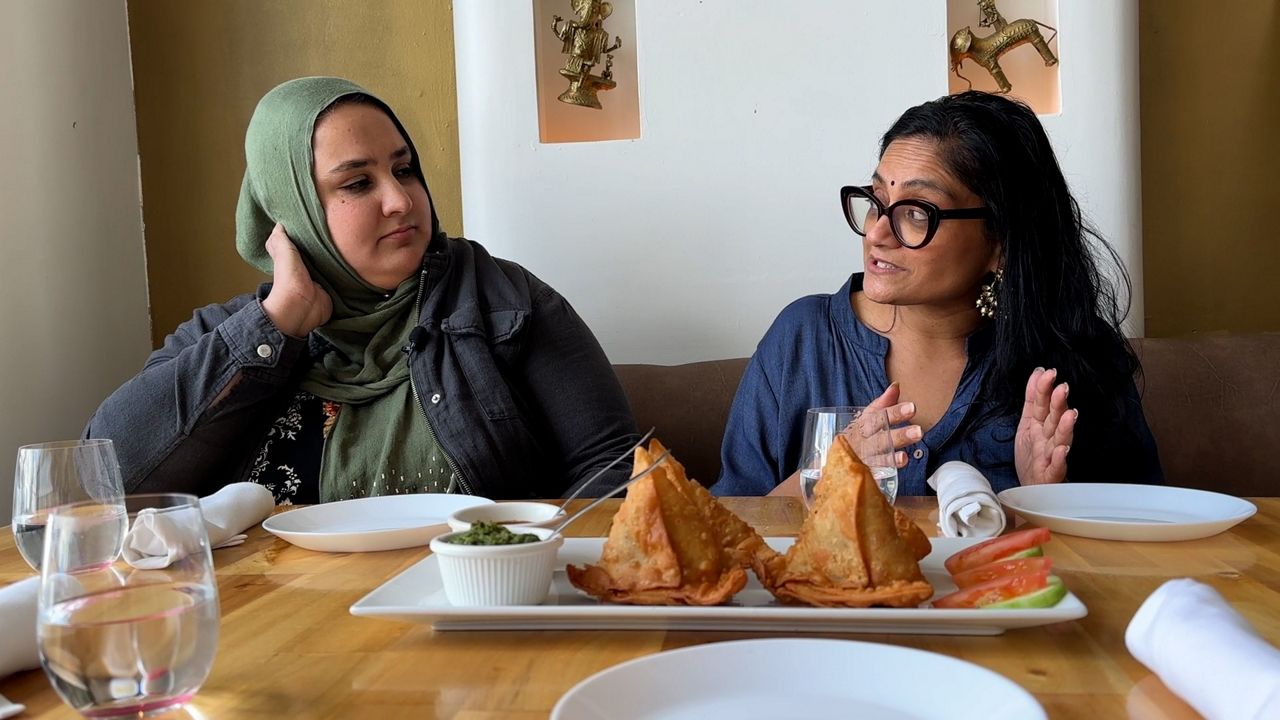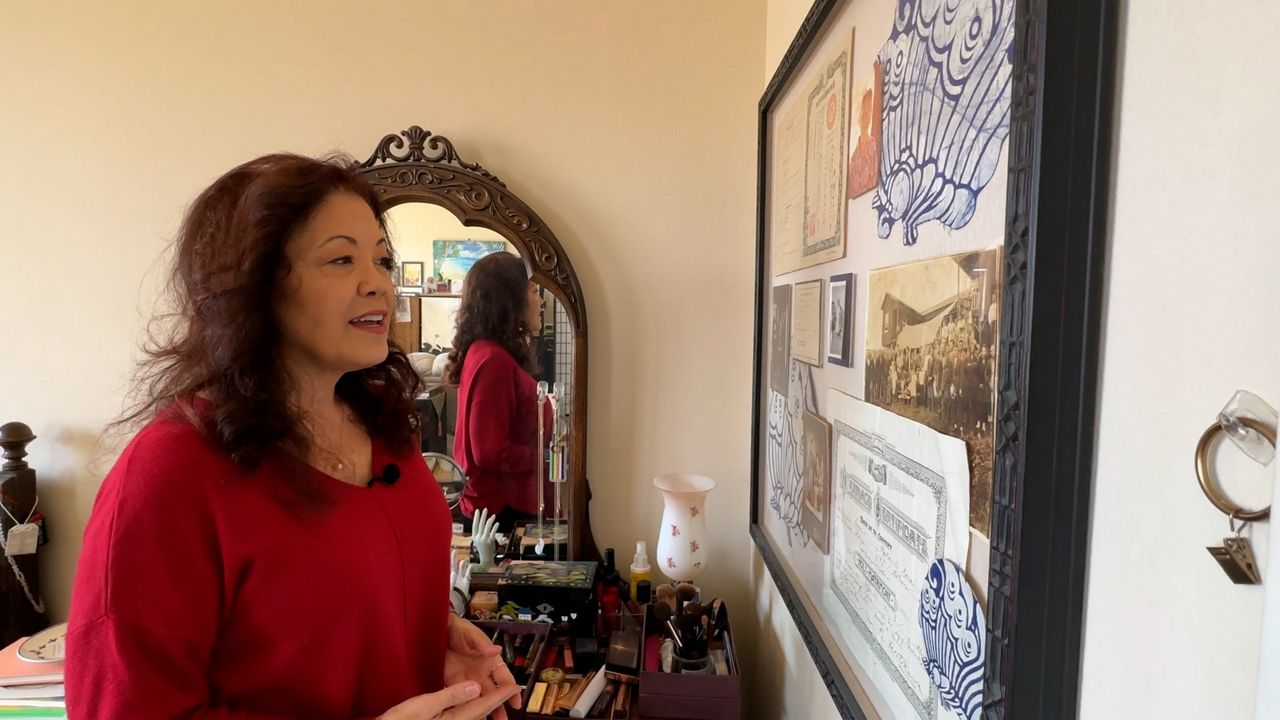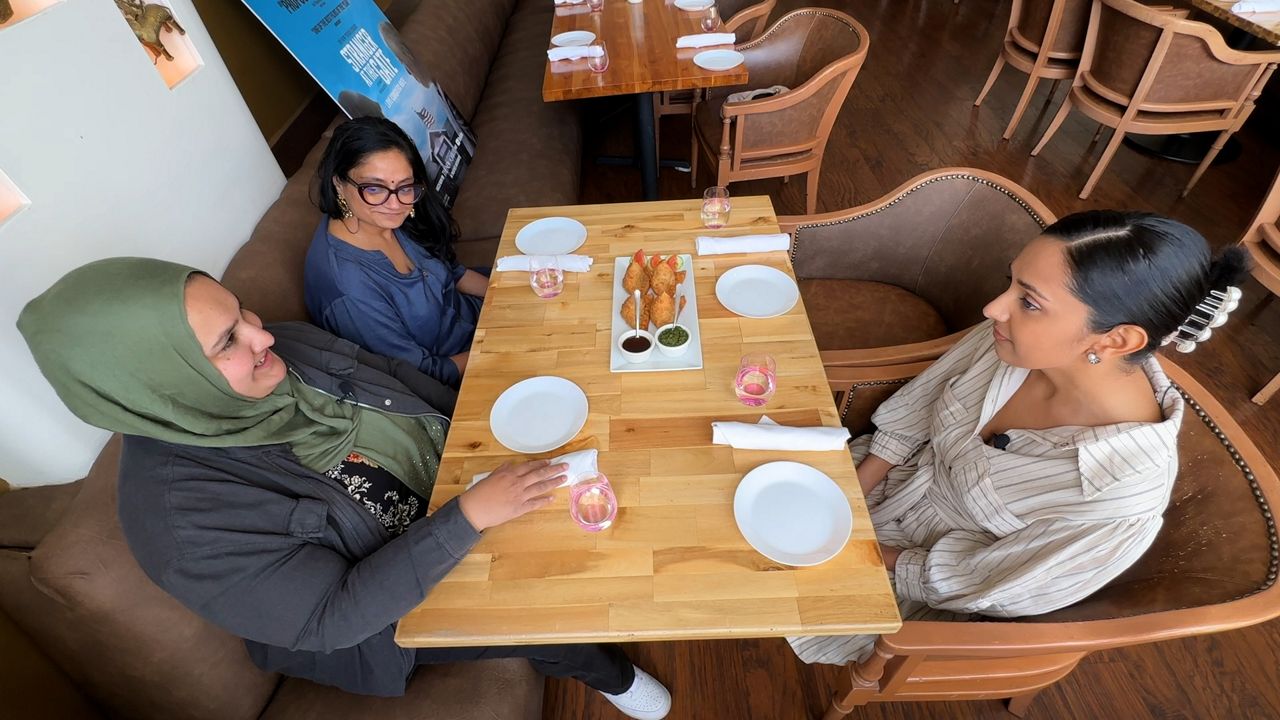BEVERLY HILLS, Calif. — “We’re going to need a bigger space,” Monika Sharma Abbas marveled as she began describing how much her organization, Product of Culture, has grown recently.
As co-founder of the organization, which produces the South Asian Film Festival of America, she is thrilled by the number of South Asian women being recognized for their achievements in the arts this year.
“I think it’s a groundbreaking year,” she explained, just days before the 95th Academy Award ceremony. “We’re not just seeing South Asian women in front of the camera, we’re seeing them directing films, we’re seeing them write music. And so we want to celebrate that diversity across all different verticals.”

Sharma Abbas had just sat down to lunch at Bombay Palace in Beverly Hills, one of the oldest Indian restaurants in Los Angeles. In a way, the meeting was an unofficial Oscars luncheon — a gathering of women in media to celebrate a banner year for Asian and Asian American representation.
“It is so amazing to see all my sisters rise,” Bhavani Rao of South Asian Women in Entertainment beamed, gesturing to her lunch dates. “It is one of the most magnificent sights when you see the person next to you and the person next to you get ahead.”
She literally means the person next to her. Lena Khan is one of the executive producers of “Stranger at the Gate,” which is nominated for an Oscar for best documentary short.
“When I told my mom that we had a nomination, she’s like, ‘But there’s a Muslim in your movie!’” Khan said, the table breaking into a roar of laughter. “And she’s like, ‘Who’s gonna vote for that?’ I’m like, ‘Things are changing!’”
It’s changes this very group of women has been working toward for years.
“And it’s just great to see the fruits of our labors represented and recognize on such a big platform for us,” Sharma Abbas said.
“It’s like right now we actually get to be excited about ourselves,” Khan added. “I think we’re sort of owning our art now, which is very cool.”
This is the first time in Oscars history that four Asian actors are nominated in acting categories — Michelle Yeoh, Ke Huy Quan and Stephanie Hsu of “Everything Everywhere All at Once”, and Hong Chau of “The Whale.”
Ren Hanami is the national chair of the SAG/AFTRA Asian Pacific American Media Committee, a group she founded roughly 20 years ago. Since then, she said, there has definitely been an increase in representation among secondary characters, but beyond that there was a barrier.
“What we’ve been told historically is that, ‘Oh, you’re not stars, so you won’t sell,’” she explained, saying how productions will often fill in the background with “authentic people with authentic backgrounds.”
But she said the popularity of films like “Crazy Rich Asians” and “Everything Everywhere All at Once” proves otherwise.
“It’s highlighting that yes, we are beloved by the audiences. They do want us to be in the lead roles. They do want us to be stars,” Hanami said.
She hopes decision makers will pay attention or better yet, that Asian Americans will advance to become the decision makers themselves, and have a greater say over the type of content that is created.
Hanami’s Glendale apartment is like a museum of family history. Framed collages line the walls, displaying her grandmother’s photo and marriage certificate from 1912. In a box, she keeps the now antique silk kimono that she brought with her from Japan over a hundred years ago. Meanwhile, on her father’s side, photos of the ruins of a family castle in Scotland which is currently being renovated. But despite her Eurasian background and the fact that she is third generation American, she says the industry has a hard time knowing where to put her.

“I think that we have had the hardest time because we’re not foreign,” she said of some of her fellow AAPI actors. “We’re not from Asia, but when people look at our faces, they don’t think of us as American.”
She’s excited to have personal friends among the nominees at this weekend’s Academy Award ceremony, but this moment she said is about more than who goes home with a statue. Ultimately, she believes how Asian Americans are portrayed on screen can have a direct impact on how the population is perceived and treated in the real world.
“It’s about humanizing our faces, really,” Hanami explained. “So many times, we’re not seen as full beings. We’re seen as foreigners. We’re seen as enemy. We’re seen as ‘Oh, you’re the reason we had the coronavirus and, you know, slurs about that.”

“The more people enjoy a show where they see someone who looks like me,” she continued, “then I become human, I become their friend, I become someone who’s not scary and foreign. And that’s important.”
There are many achievements being recognized this year with Asian and Asian American nominees represented for their work in categories like animation, music, screenwriting. But as exciting as it is, Hanami remains a bit cautious. She’s devoted years to highlighting the work and talents of AAPI artists, and while she has seen waves of progress, she’s also seen the interest ebb.
“It seems like we still end up having to be in the waiting room,” she said.
But Sharma Abbas feels this time is different in large part thanks to the work being done to create and maintain new pathways to entry.
“A lot of our work in the last year has been working as an agency,” she explained of Product of Culture, “and showing a lot of corporate companies and bigger production houses that there’s value in South Asian stories.”
As an array of dishes arrived, Rao laid out her overall vision.
“I think the biggest thing is I’m not fighting for scraps at somebody else’s table,” she said of her strategy. “I’m building the table. I think that’s what we’re all doing. How big can we build a table?”



